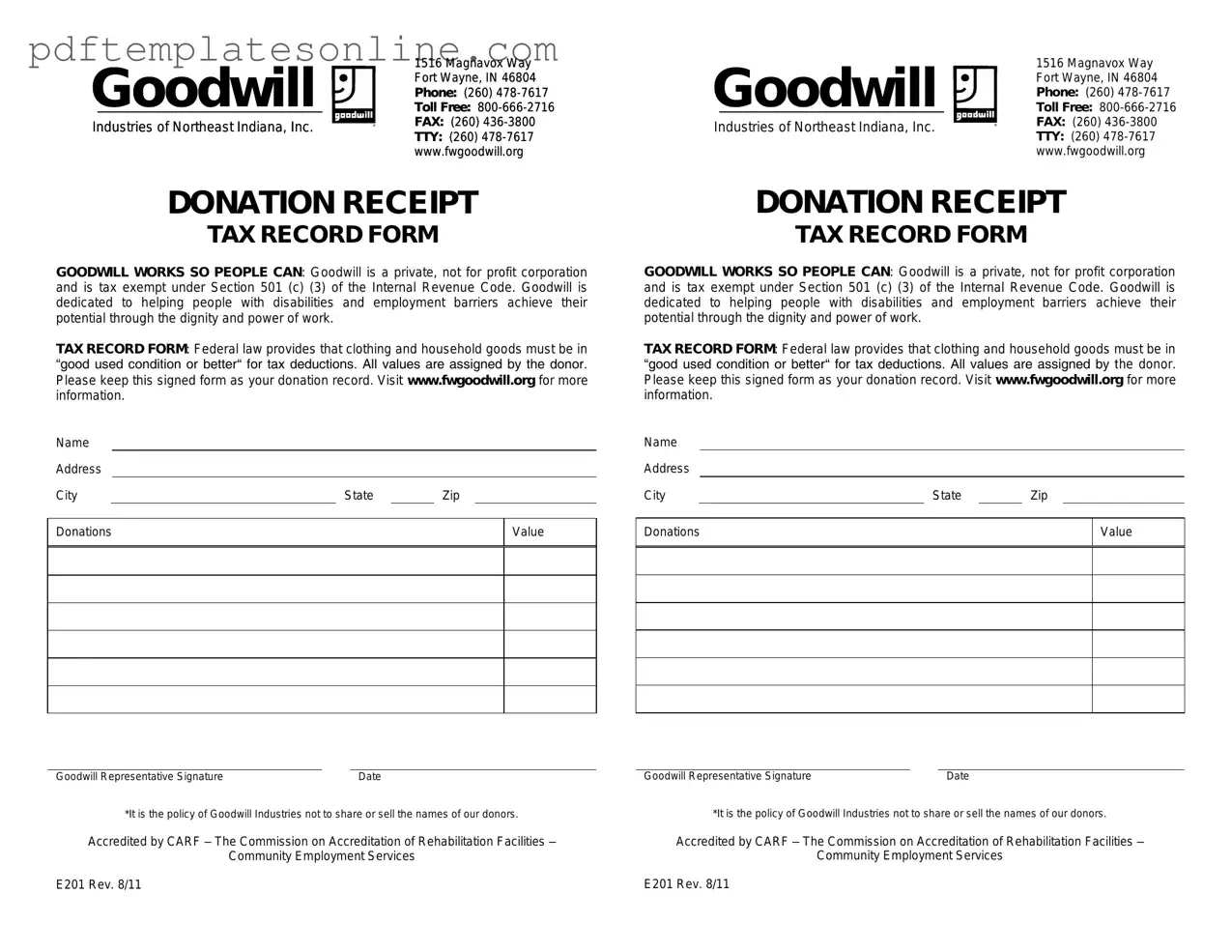When donating items to Goodwill, it's essential to fill out the donation receipt form accurately. Many people make mistakes that can complicate their tax deductions or lead to misunderstandings later. One common error is failing to list all donated items. Each item should be documented clearly, as this can affect the value of your deduction.
Another frequent mistake is not estimating the fair market value of the items. Donors often underestimate the worth of their belongings, which can result in a smaller tax deduction than deserved. It’s crucial to research and determine a reasonable value based on similar items in thrift stores or online marketplaces.
People also tend to forget to sign and date the receipt. A signature and date are vital for validating the donation. Without these, the receipt may not hold up if questioned by tax authorities. Always remember to complete this step before leaving the donation center.
In addition, some donors neglect to keep a copy of the receipt for their records. It’s important to retain a copy for tax filing purposes. Without it, proving the donation could become challenging if the IRS requests documentation.
Another mistake involves not checking for specific guidelines from Goodwill regarding the types of items accepted. Donors may inadvertently list items that Goodwill cannot accept, which can lead to confusion and complications. Always verify the donation guidelines to ensure compliance.
Lastly, some people fill out the form in a hurry, leading to illegible handwriting. If the receipt cannot be read, it may cause issues later on. Take the time to write clearly, ensuring that all information is easy to understand.
